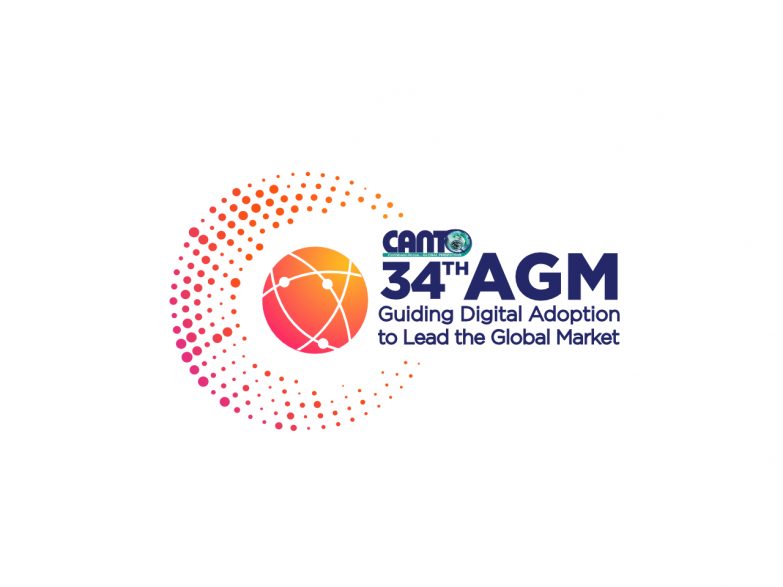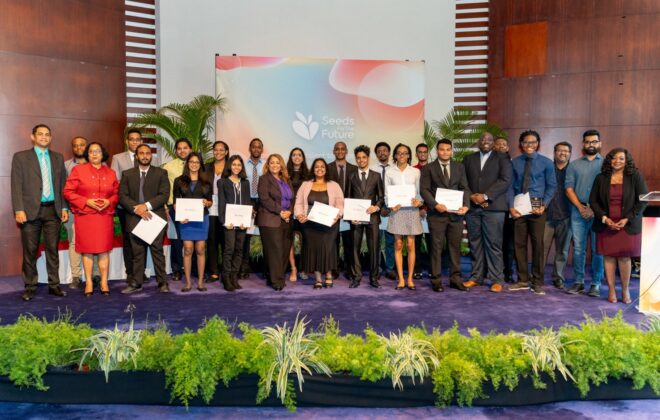CANTO Weekly Newsletter – BNamericas 03/11/16
5G Americas calls for expedited use of auctioned spectrum – Brazil, Regional
Coopelesca bringing FTTH to northern Costa Rica – Costa Rica
Movistar Nicaragua launches 4G LTE in 2nd city – Nicaragua
Millicom, TransferTo scaling up Tigo Money – Regional
Key LTE services to debut in LatAm in 2016 – Regional
| 5G Americas calls for expedited use of auctioned spectrum – Brazil, Regional
More than increasing spectrum auctions, Latin American telecom regulators need to expedite the commercial use of those already auctioned for mobile broadband use, according to 5G Americas. The entity calls auctioned radiofrequencies still occupied by other services, such as TV broadcasting, “dirty spectrum.” “There are cases in which operators acquired dirty spectrum, cannot commercialize them and therefore cannot have a return on their investment, but yet still have to pay an annual amount for their possession,” 5G Americas director for Latin America, José Otero, said in a webinar on Tuesday. In Brazil, watchdog Anatel auctioned 700MHz bands for 4G LTE in 2014, but the frequencies – currently occupied by analog TV channels – will only be freed up after the digital switchover, which in a best case scenario will take place in 2018. The average of spectrum allocation for mobile broadband across the region remains low, at 325MHz, although several regulators are working to release further bands. Brazil and Chile are leaders with 542MHz and 465MHz allocated, respectively. In European markets, this level reaches 700Mhz, 800MHz, Otero said. The International Telecommunication Union (ITU) recommends 1,300MHz for the 2015-20 period Other problems with spectrum allocation are auctions that do not attract bidders and awarding of licenses to carriers with insufficient capital to build infrastructure and deploy commercial services. Otero also criticized the high prices charged for licenses. According to 5G Americas, the price per MHz in many LatAm markets is too high compared to their GDP per capita. In Peru, the MHz costs US$0.30 per capita. “Regulators need to decide whether they want to collect money or to expand broadband with the spectrum auctions,” Otero said. Coopelesca bringing FTTH to northern Costa Rica – Costa Rica Costa Rican power cooperative Coopelesca will start providing broadband internet services through 500 optical fiber to the home (FTTH) connections in the cantons of the north, according to a report by daily El Finaciero. “We have already started technical tests and in three months a pilot program will begin in the city of Quesada,” said deputy manager Edward Herrera. Coopelesca invested US$42.4mn in the country’s telecom network between 2008 and 2015, which currently extends over 650km of fiber optic and 744km of coaxial cable for television services, internet and digital television. The company is expected to invest another US$7.7mn in 2016. Movistar Nicaragua launches 4G LTE in 2nd city – Nicaragua Movistar Nicaragua has announced that 4G LTE is now available in the coastal resort of San Juan del Sur, Rivas, according to a report by daily Nicaragua Al Dia. Movistar customers in San Juan del Sur now have access to 2G, 3G and 4G LTE, with the latter being utilized for improved internet performance and the two former for calls and text messages. San Juan del Sur is now the second city in the country to have access to Movistar’s 4G LTE service after Managua. “Our goal is to improve the browsing experience of Nicaraguans and foreigners visiting this tourist destination of great importance. And the reflection of our commitment is the new next generation 4G LTE that is undoubtedly another contribution to the development of our country’s network,” said Movistar’s deputy director of marketing Giancarlo Peñalba. In October 2015, Claro (América Móvil) commercially launched its LTE offering in Nicaragua, which utilizes the AWS band in Managua, Matagalpa, Esteli and León. Millicom, TransferTo scaling up Tigo Money – Regional Global telco Millicom is partnering with mobile money company TransferTo in order to scale its Tigo Money m-banking brand in Latin America. The strategic partnership will cover El Salvador, Honduras, Guatemala, Bolivia, Colombia and Paraguay, TransferTo said in a press release. Tigo Money has over 4mn m-money wallets users and works with over 11,000 m-money agents. In El Salvador alone, Tigo Money moved around US$500mn in domestic and international remittances, bill payments and other services in 2015. TransferTo’s Mobile Money Hub provides a solution for financial institutions to connect with millions of m-money accounts worldwide via a single connection. “This partnership will allow Tigo Money to accelerate international remittances business into our digital wallets, by connecting more and more remittance partners around the world, in less time and offering a reliable, fast and secure way for customers to receive their money. We aim to enable our customers to reduce their dependency on cash, increase their access to financial products and services whilst supporting Tigo’s expansion of its digital financial ecosystem,” said Ronald Alvarenga at Tigo. “The TransferTo mobile money remittance hub will enable Tigo customers in multiple markets worldwide to have more control over how, when, and where they access funds via mobile,” added Eric Barbier, CEO of TransferTo. Key LTE services to debut in LatAm in 2016 – Regional Latin America will see the first deployments of carrier aggregation, voice over LTE (VoLTE) and LTE broadcasting as operators seek to monetize investments in their networks, according to chip maker Qualcomm. Aware of the high rate of adoption of mobile broadband in the region, particularly the increasing use of video, operators have begun speeding up the migration of subscribers to more advanced and efficient networks in all three technologies. “We know that producing a megabyte is less expensive on 4G than on 3G and 2G, and carriers are keen to promote 4G adoption for more efficient use of their networks,” Qualcomm’s Latin America president Rafael Steinhauser told BNamericas. Adoption of LTE has been slower compared with other regions. Last year, in China, over 80% of new phones were LTE capable, compared with less than 20% in Latin America. But new LTE-based technologies will emerge this year regardless, pressuring migration, he added. CARRIER AGGREGATION Carrier aggregation is a key step towards 5G technology, where the bandwidth of two or more frequency bands is combined to maximize throughput. “The spectrum allocated is not contiguous; there is not a single channel available. By using carrier aggregation we can get more bandwidth efficiency,” Steinhauser said. Chile’s Entel carried out last September the first trial of LTE-Advanced (LTE-A) Carrier Aggregation in Latin America with speeds of 200Mbps. Since then, Brazilian operator TIM aggregated three different frequencies – the 700MHz, 1.8GHz and 2.5GHz bands – and Movistar Argentina tested carrier aggregation. Meanwhile, Ericsson and América Móvil have said they will test the first 5G systems in Brazil this year. LTE BROADCAST With such a major emphasis on video usage, LTE broadcasting is becoming a necessity. LTE Broadcast technology allows the simultaneous transmission of high-quality video for multiple mobile users at a selected location over a 4G LTE network. The multicast transmission is suited mainly to mobile TV and events with a large attendance. Last month, América Móvil carried out the first field tests of LTE broadcasts through local subsidiaries Claro and NET at the Rio Open tennis competition in Brazil. Steinhauser is confident that the Olympics in Rio de Janeiro in August will be the first major sports tournament to use the technology. VOLTE Meanwhile, VoLTE is set to make its debut in the region this year. “4G was used mainly for the transmission of data with voice transmitted over 3G networks. 4G is better and more efficient for voice. Trials are ongoing in the region and it will become a reality this year,” Steinhauser said. The Global mobile Suppliers Association (GSA) has confirmed that more than 103 operators are investing in VoLTE deployments, trials or studies worldwide in 49 countries. And 25 operators in 16 countries have commercially launched VoLTE-based HD voice services. Last month, Telefónica’s Colombia unit teamed up with Ericsson to deploy the country’s first cloud-based network for voice over LTE (VoLTE) services. In the same month, Chile’s Entel confirmed it is currently testing voice over LTE technology (VoLTE) and aims to have 4.5mn of its customers using HD voice services by end-2016. In December, Telefónica’s Argentine unit announced a 36bn-peso (US$3.7bn) investment plan for 2016-18 that will finance the roll-out of 4G infrastructure and VoLTE. To read the full interview with Steinhauser click here. |
The information presented and opinions expressed herein are those of the author and do not necessarily represent the views of CANTO and/or its members


